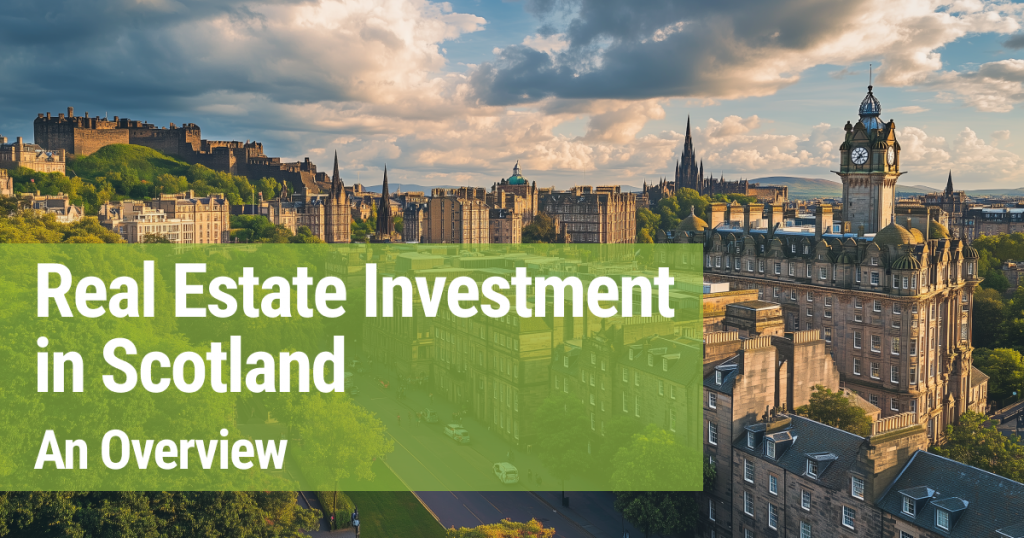Real Estate Investment in Scotland: An Overview

In this guide, you will discover everything you need to know about real estate investment opportunities in Scotland, a nation within the United Kingdom that offers both rapidly developing urban areas and breathtaking rural landscapes. In recent years, the real estate sector in Scotland has become a point of interest for investors and property enthusiasts seeking opportunities in diverse European markets.
This article explores the characteristics of the Scottish real estate market, highlights prominent regions, and outlines key considerations when evaluating properties in this country.
- Characteristics of the Local Real Estate Market in Scotland
- Key Areas in Scotland
- Legal and Regulatory Considerations When Investing in Real Estate in Scotland
- Culture and Lifestyle
- Transport and Infrastructure Insights
- Conclusion
Characteristics of the Local Real Estate Market in Scotland
Scotland’s real estate market is influenced by various factors, including local regulations that differ slightly from those in England, transport accessibility, academic institutions, seasonal tourism and economic trends.
Scotland features both advanced urban centres and well-preserved rural areas, each offering different potential uses for property, namely, residential, rental or preservation purposes.
Key Areas in Scotland
Edinburgh
Scotland’s capital is not only rich in history but is also a modern business and cultural hub. Edinburgh is a major destination for businesspeople, students and tourists, driving demand for residential properties, offices and studio apartments.
Glasgow
As the largest economic centre in Scotland, Glasgow combines industry, arts, academic institutions and a well-developed transportation network. The city is undergoing significant development, and surrounding areas offer a dynamic landscape for varying types of real estate investments.
Aberdeen
Located in the northeast, this port city has strong ties to the energy and industrial sectors. The region features a mix of industrial, commercial and residential properties, making it suitable for diverse investment strategies.
Legal and Regulatory Considerations When Investing in Real Estate in Scotland
Before purchasing real estate in Scotland, it’s important to understand the local legal system, which differs from that in England and Wales. For example:
- Purchase contracts are drafted under Scottish Conveyancing laws.
- Ownership types vary: Freehold and Leasehold.
- A local solicitor specialising in Scottish property law is often required.
- Property transactions are subject to the Land and Buildings Transaction Tax (LBTT).
Obtaining local legal advice is essential for foreign investors.
Culture and Lifestyle
Real estate investment in Scotland can also be influenced by cultural and social factors. Scottish cities are known for their tight-knit communities, traditional architecture and unique landscapes. In the suburbs and rural areas, many historic properties are considered heritage assets.
Transport and Infrastructure Insights
Most Scottish cities are connected via railways, bus lines and major highways. There are also direct flights to European destinations from international airports such as Edinburgh and Glasgow. This well-developed infrastructure facilitates mobility, impacting property accessibility and demand.
Conclusion
Real estate investment in Scotland, one of the four nations of the United Kingdom, offers a wide range of opportunities in both urban and rural areas, each with its own distinct character. Understanding the local context, be it legal, geographical or cultural, is crucial before proceeding with any property acquisition or management.
Whether you’re considering a vibrant city such as Edinburgh or a secluded countryside estate, it’s important to take a broad perspective, conduct thorough due diligence, and plan every step with a long-term outlook.
